Physical Address
304 North Cardinal St.
Dorchester Center, MA 02124
Physical Address
304 North Cardinal St.
Dorchester Center, MA 02124
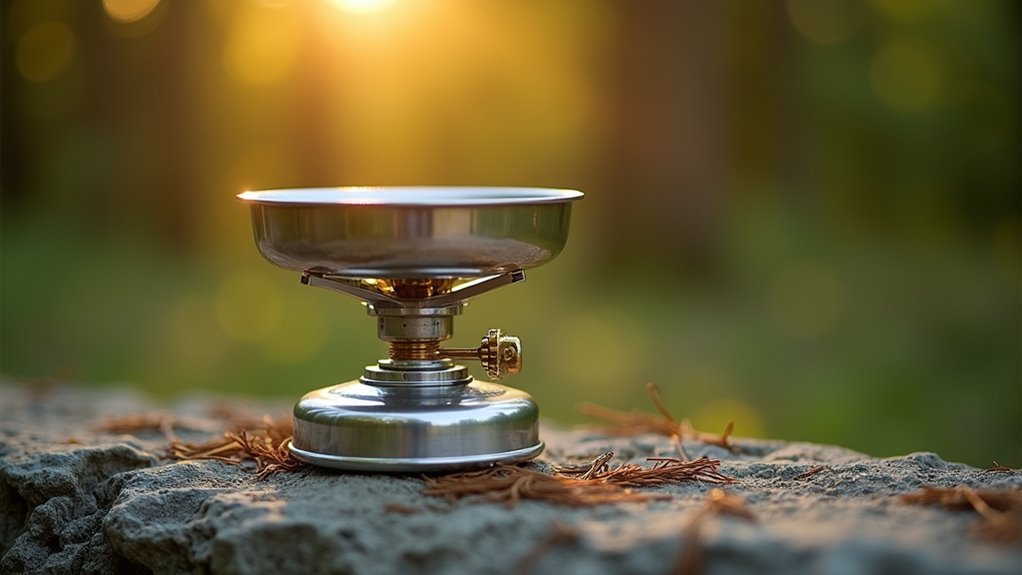
Gear that's remained unchanged since 1951 still outperforms modern camping stoves, but the surprising reason why might change your next purchase.
You probably don’t realize that Trangia stoves have been using the exact same alcohol burner design since 1951, outlasting countless “revolutionary” camping innovations. While other manufacturers chase complex features and premium prices, these Swedish-made stoves prove that simple engineering often beats flashy marketing. There’s something invigorating about gear that works the same way your grandfather used it, but you’ll want to understand why this old-school approach might actually give you better results than modern alternatives.
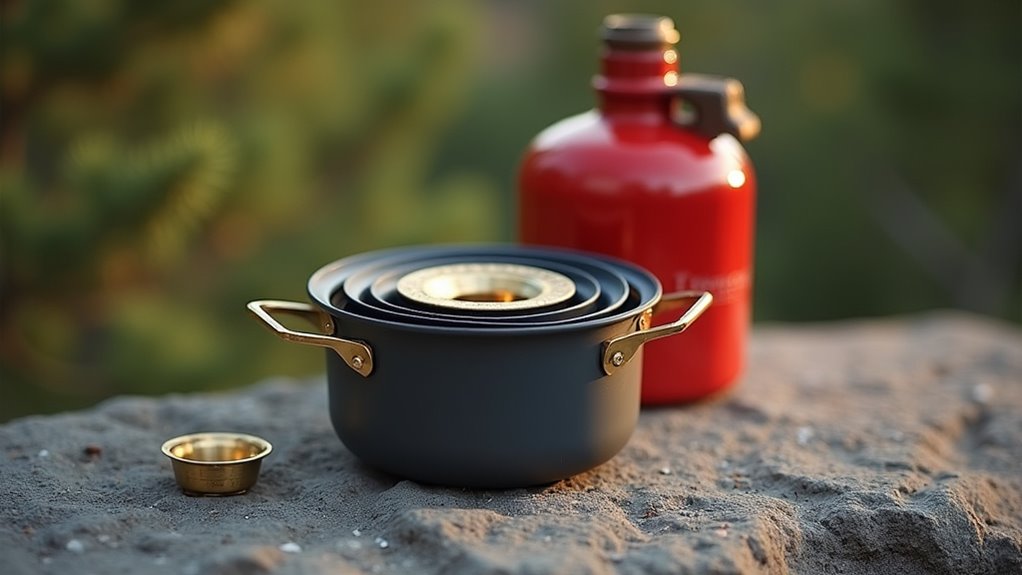
When you’re browsing camping stoves, you’ll quickly notice that Trangia takes a completely different approach than most manufacturers. While others focus on high-tech features and complex fuel systems, Trangia keeps things pleasantly simple with alcohol-burning burners that haven’t changed much in decades.
Trangia’s decades-old alcohol burner design proves that sometimes the simplest approach works best for outdoor cooking.
You won’t find piezo ignitions, pressure regulators, or intricate valve systems here. Instead, you’ll get a basic burner that lights with a match and runs on denatured alcohol you can buy anywhere.
This simplicity means fewer parts to break, easier maintenance, and notably lower costs.
Trangia’s modular system also sets them apart. You can mix and match components to build your ideal cooking setup, from ultralight solo configurations to family-sized systems, all using the same reliable burner technology. This versatility makes them perfect companions for camping tables where you want a stable cooking setup for outdoor adventures.
The Trangia system centers around three main components that work together seamlessly: the alcohol burner, the windshield assembly, and your choice of pots and pans.
Here’s how these components function as a complete cooking system:
Don’t forget to pack a reliable water bottle to ensure you stay properly hydrated while cooking and camping outdoors.
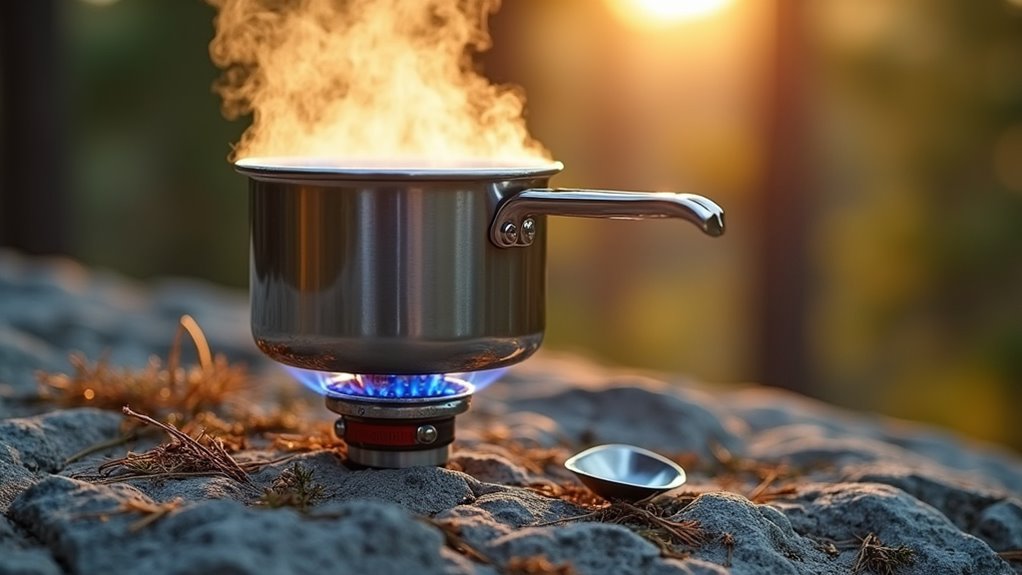
While gas canisters and liquid fuel systems dominate today’s backpacking market, alcohol-fueled stoves offer compelling advantages that’ll make you reconsider your cooking setup.
You’ll never worry about finding fuel since denatured alcohol is available at hardware stores worldwide. Unlike gas canisters, you can carry exactly the amount you need and refill from any container. There’s no pressure regulation to fail or clog in cold weather.
Alcohol burns cleanly without leaving soot on your cookware, and spills evaporate harmlessly.
The fuel costs pennies compared to expensive gas cartridges, making it budget-friendly for extended trips.
Safety-wise, alcohol flames are visible in daylight and extinguish easily with water. You won’t deal with pressurized containers or worry about leaks in your pack.
Since Trangia offers several stove systems designed for different group sizes and cooking needs, you’ll want to understand which model fits your adventures best.
Choosing the right Trangia model depends on your group size and specific outdoor cooking requirements.
The Storm Cooker series remains their flagship line, with models ranging from compact solo setups to family-sized systems. Here’s what you’ll find:
Each system includes the signature alcohol burner, integrated windshield, and nesting cookware.
You’ll save money compared to gas systems while getting proven reliability. For maintaining personal hygiene during extended camping trips, consider pairing your cooking setup with portable camping showers to stay fresh in the wilderness.
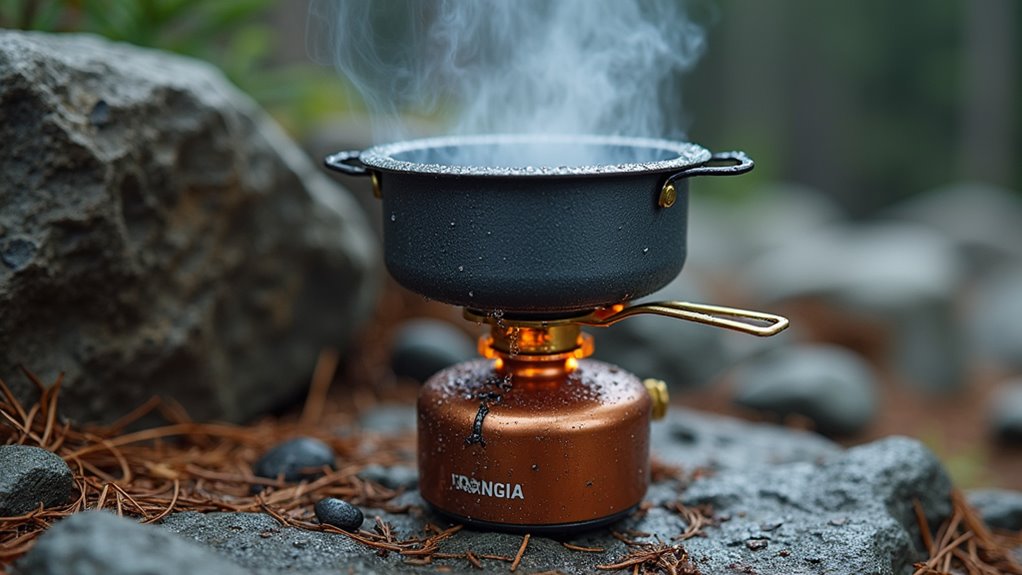
Understanding which Trangia model suits your group size matters little if weather conditions shut down your cooking plans entirely. You’ll find Trangia stoves handle wind better than most alcohol burners, but they’re not bulletproof. The included windscreen helps, though strong gusts still slow cooking times and waste fuel.
Cold weather presents bigger challenges. Alcohol doesn’t vaporize well below freezing, making ignition tricky and flames weak. You’ll need to warm the fuel bottle inside your jacket or sleeping bag before cooking.
Rain won’t extinguish the flame, but it’ll cool your cookware and extend cooking times.
Heat output remains consistent in moderate conditions, but don’t expect restaurant-speed cooking. Budget extra time and fuel for harsh weather, and consider carrying backup fire-starting materials for reliability. Similar to evaluating whether to rent or buy equipment for water-based activities, you should weigh the frequency of your camping trips against the initial investment in a quality stove system.
Getting the most from your Trangia stove starts with proper fuel measurement—you’ll waste money and add unnecessary weight if you overfill the burner. A quarter-full burner typically burns for 15-20 minutes, which is plenty for most meals.
Here are four essential techniques that’ll save you fuel and frustration:
Keep your burner clean and store it empty between trips to prevent alcohol evaporation and maintain peak performance. If you’re camping with dogs, consider the advantages of having a companion to keep you company during meal preparation, though be mindful of the drawbacks like keeping them safely away from the open flame.
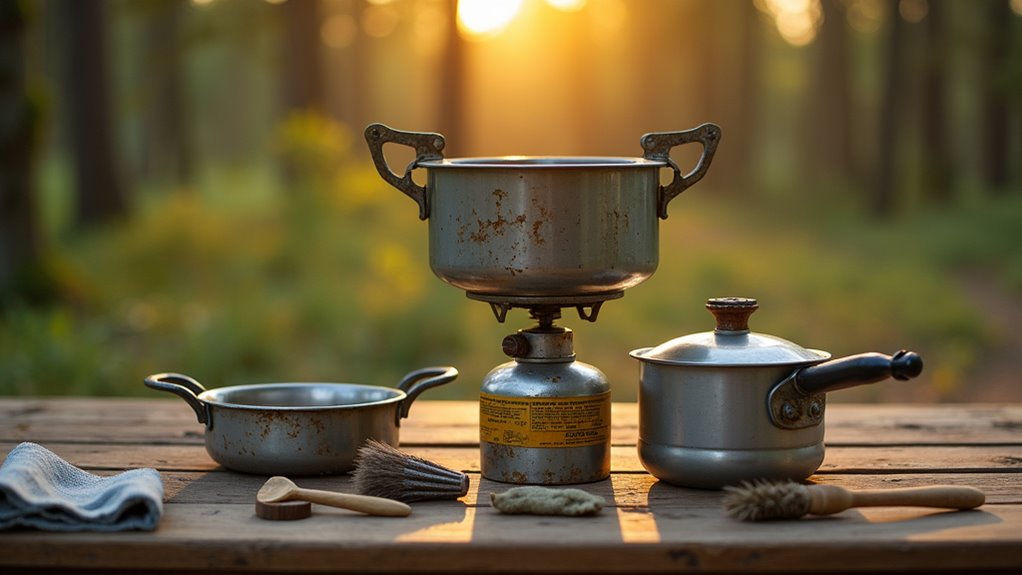
Proper maintenance will keep your Trangia stove running like new for decades—many users report 20+ years of reliable service from a single unit.
With proper care, your Trangia stove will provide decades of dependable outdoor cooking performance.
Clean your burner regularly by soaking it in warm, soapy water to remove food residue and carbon buildup. Use a soft brush or cloth—never steel wool, which scratches the aluminum surface.
Check the rubber O-ring on your fuel bottle periodically and replace it when it becomes hard or cracked.
Store your stove completely dry to prevent corCorrosion, and keep all components loosely assembled to maintain proper fit.
Replace the burner’s simmer ring if it warps from overheating.
With basic care and occasional part replacement, your Trangia will deliver consistent performance trip after trip without breaking your budget.
You can even showcase your well-maintained Trangia setup at events like Britain’s Motorhome Show where fellow camping enthusiasts gather to share their experiences.
You’d think a stove this simple couldn’t possibly compete with today’s high-tech camping gear, yet here’s your Trangia outlasting expensive contraptions that’ll leave you eating cold beans when their fancy valves freeze up. While others are troubleshooting their complicated systems, you’re already enjoying hot meals with nothing more than alcohol and a match. Sometimes the most reliable technology is the one that barely qualifies as technology at all.